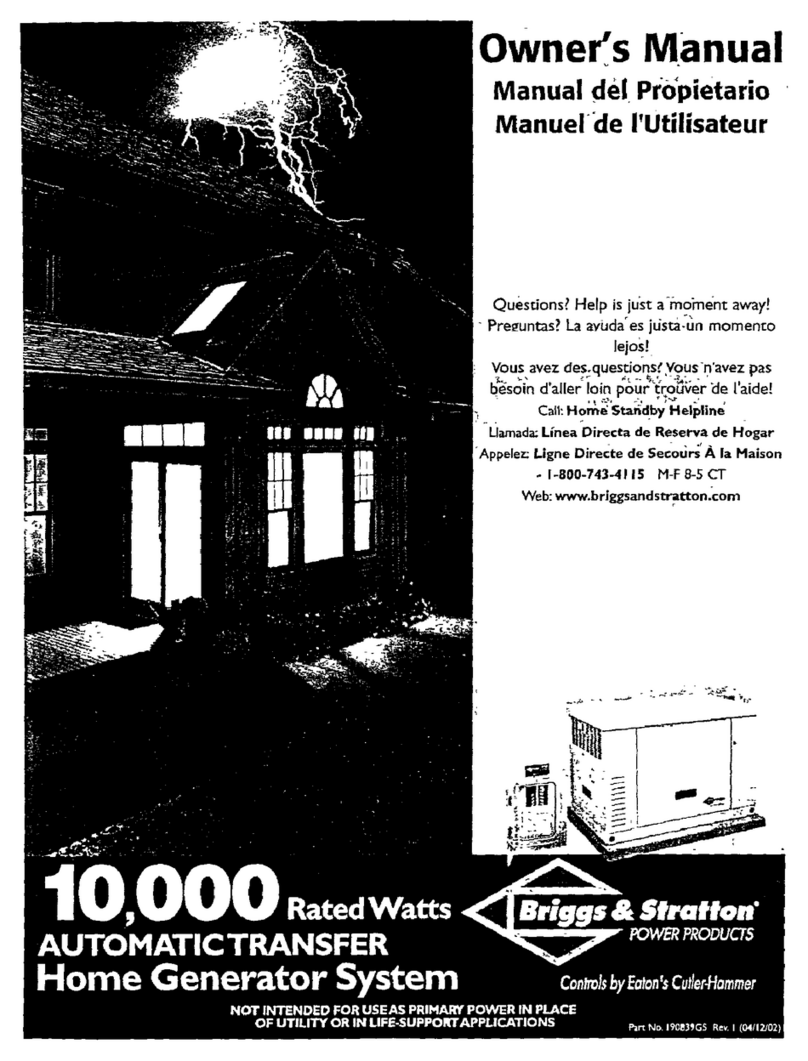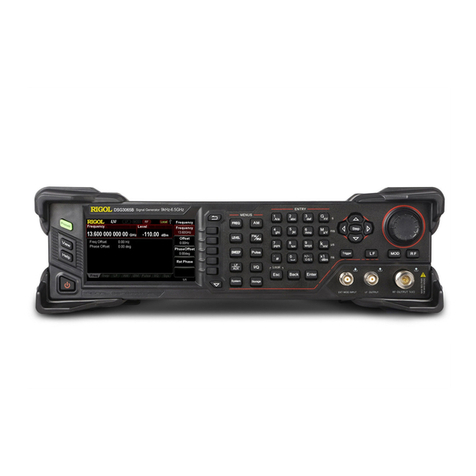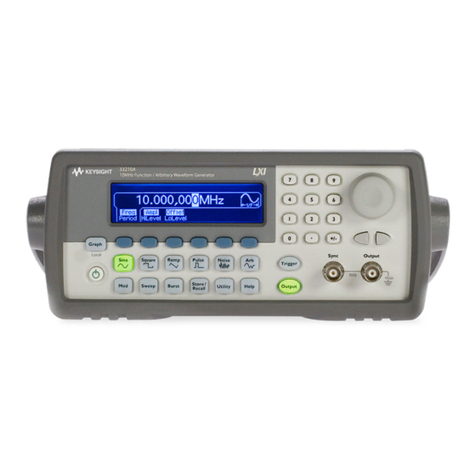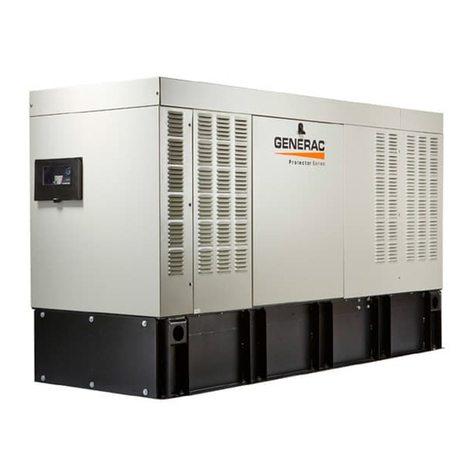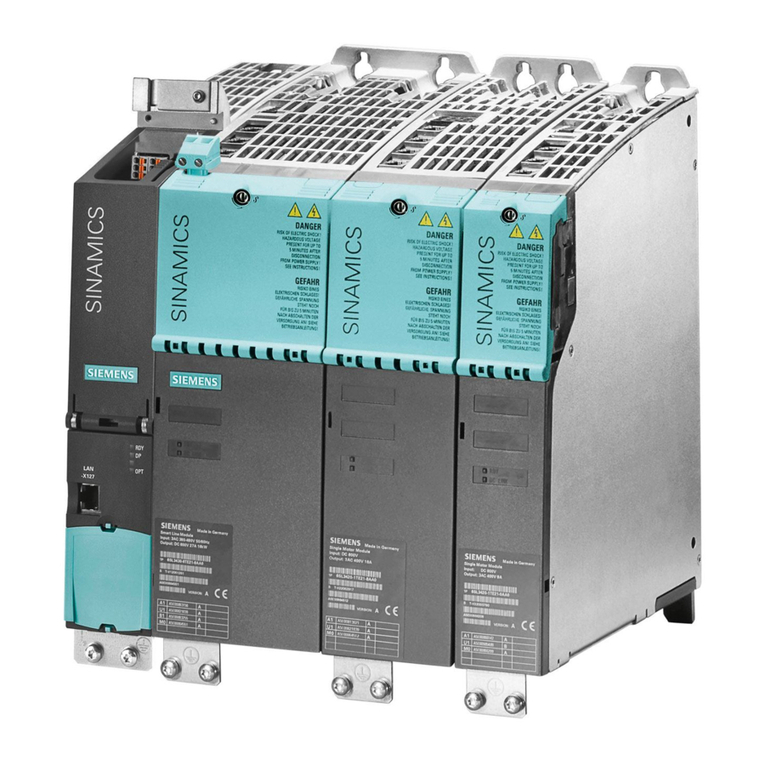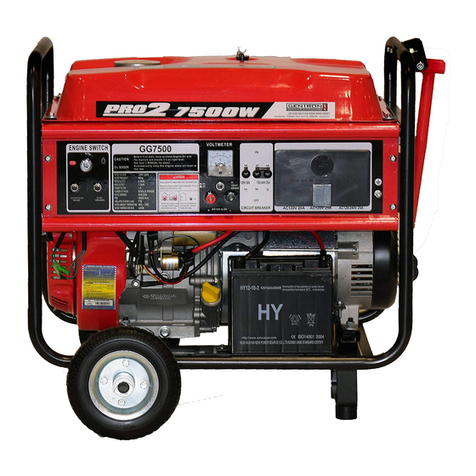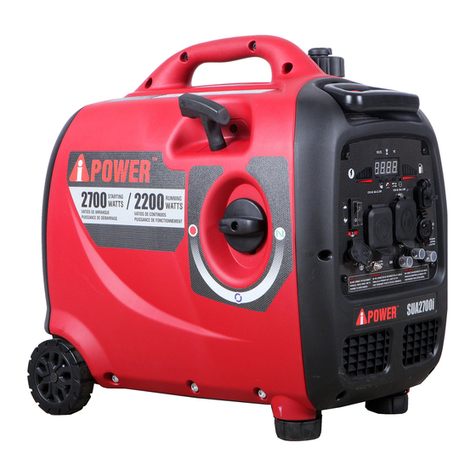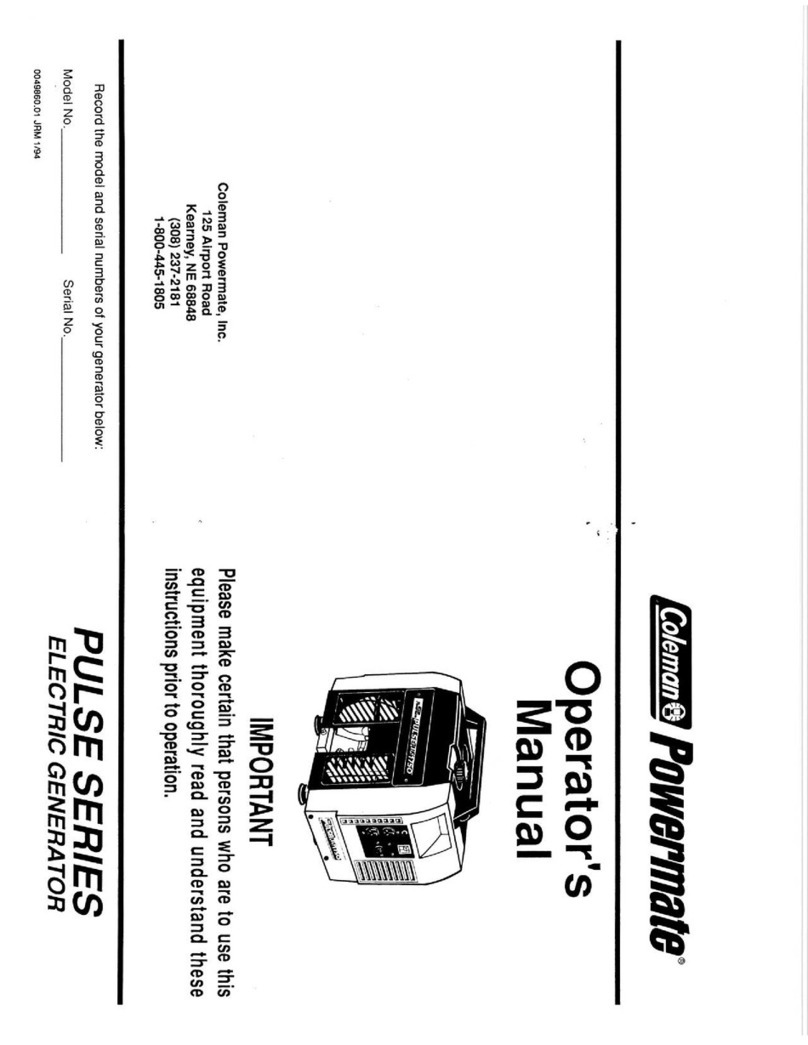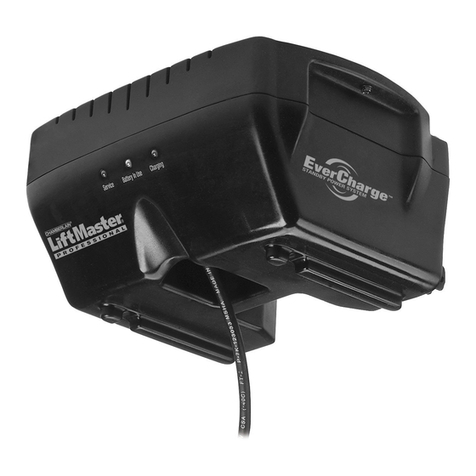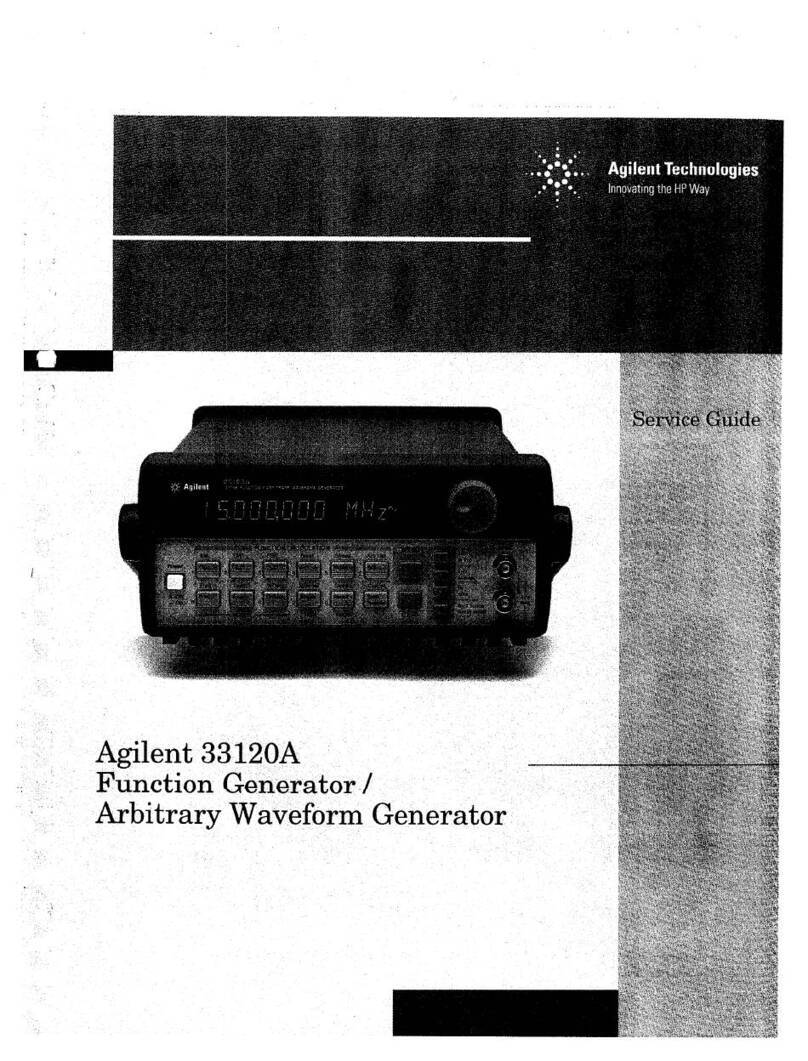
Circuit
Description
4.1 WI EN
BRIDGE
OSCILLATOR
Transistors,
TR
1 -
TR6,
comprise
the
oscillator
amplifier.
Transistor
TR7,
is
a
supply
rail stabiliser.
The
input
of
the
amplifier
goes
to
a field
effect
transistor,
TR2,
which
is
in
a long-tailed
coupling
with
TR3.
TR2
is
driven
in
cascade
with
TR
1,
to
avoid Miller
capacitance
to
the
input
gate.
The
base
of
TR
1
is
d.c.
coupled
to
the
'common'
emitters
of
TR2
and
TR3.
thus
providing
TR2
with
a
constant
emitter-collector
voltage
to
reduce
distortion
with
the
large signal
swing
at
the
emitter
of
TR2
(3Vp-p).
The
signal from
the
collector
of
TAl
is
fed
to
emitter-
follower,
TR4,
with
bypassed
collector
resistance, R35,
serving
to
limit
current
at
switch-on,
before
the
oscillator
d.c. levels are
established.
Diode
04,
from
the
collector
of
TR5
to
the
emitter
of
TR4,
'catches'
the
collector
of
TR5
and prevents it
from
rising and
bottoming
by
almost
the
full Zener
potential
of
02.
TR4
drives
the
base
of
the
transistor
TR5,
which
inverts
the
signal, feeding it
to
the
output
emitter-follower,
TR6.
From
the
emitter
of
TR6
the
signal
is
taken
to
the
input
of
the
Wien Bridge consisting
of
ganged variable
capacitors,
C7
A,
C7B, and
the
switched
Range resistors, R1-RS.
The
range resistors, R1
to
R4, are
returned
to
variable bias
at
T.P. (A) which sets
the
d.c. level
at
the
output,
T.P. (E).
The
stability
of
this d.c. level
is
maintained
by
feedback
to
the
base
of
TR3.
In
the
symmetrical
Wien Bridge
configuration
used
in
the
J3A
oscillator.
the
voltage
transfer
ot
the
bridge
at
'resonance'
is
precisely
1/3.
A
similar
voltage
transfer
is
effected
in
the
feedback
network
comprising
Thermistor,
R44, its
shunt
resistors
R33
and
R34,
and
the
feedback resistor, R30,
thus
maintaining
the
high-gain amplifier in
operational
equilibrium.
If
the
output
level
is
low,
Thermistor
R44,
is
cold
and
hence
its resistance
is
high. This reduces
the
negative feedback
which,
in
turn
increases
the
gain
of
the
amplifier until
equilibrium
is
re-established.
The
opposite
happens
if
the
output
level
is
high.
The
same voltage
transfer
of
1/3
is
also a.c.
coupled
to
the
resistor, R28 (the
'long
tail'
of
TA2,
TR3),
effectively
producing
constant
current
in R28.
The
same
1/3
voltage
is
also applied
through
buffer
resistor,
R31,
to
the
'Guard'
T.P. (C),
which
is
connected
to
guard
screens placed
around
the
variable
capacitor
gang
to
reduce
variations
of
capacitance
between
the
rotor
and
ground.
R27,
C24,
and R37,
C30
are
frequency
roll-off elements
to
maintain
stability
and
diode,
03,
provides signal
continuity
and
circuit
stability
when
TR6
cuts
off
during
the
period
before
the
termistor
reaches
operating
temp-
erature
and
thus
reduces
output
signal level
to
normal.
The
full
output
of
the
oscillator
from
the
emitter
of
TR6,
is
applied
through
R9
and
C8
to
amplitude
control,
R10, and
thence
to
the
Power
Amplifier. A
tap
on
the
load resistor
of
TA6
supplies a lower level signal
to
the
input
of
the
Squaring
circuit,
A46 provides
extra
current
to
TR6
to
assist
"pull-up".
The
entire
oscillator
is
mounted
in
a screen
box
to
minimise
hum
and
noise pick-up.
Thermistor
R47
compensates
for
amplitude
changes
in
the
oscillator with
temperature.
'
Section
41
4.2
POWER
AMPLIFIER
The
power
amplifier
of
the
J3A
is
fed
from
a regulated rail
of
+37V and consists
of
transistors,
TR101
-TR 106.
TR101
and
TR102
are
connected
in
a
'long
tail'
configuration
the
input
signal from
the
amplitude
control,
R10, being
applied to
TR101
and
the
negative feedback
to
TR102.
The
base
of
TR101
is
biased at
1/4
rail voltage via
R104
and
R102, and
the
input
signal
is
a.c.
coupled
through
002.
The signal path through
the
Amplifier
is
from
the
collector
of
TR101
through
emitter
follower,
TR103,
and
the
common·emitter
stage,
TR
104,
to
the
complementary
output
pair,
TR105
and
TR106.
There are
two
negative feedback paths
to
the
base
of
TR
102, via equal resistors, R
108
and R120. R
120
is
connected
directly
to
the
output,
and R
108
is
returned
to
a feedback winding
on
the
output
transfo'rmer.
As
this
is
effectively
'grounded'
for d.c., stability
is
reached when
the
mean
output
voltage
is
twice
the
base voltage
of
TR102,
that
i9
half
the
rail voltage, enabling
the
Class B
output
transistors,
TR105
and
TR106,
to
swing equally
in
both
directions.
For
signal currents,
R108
and
R120
are
in
parallel, since
the
feedback winding has
turns
equal
to
the
primary
of
the
output
transformer.
The
negative feedback signal
through
these resistors develops a voltage across R
11
O+R
111, which
defines
the
voltage gain
of
the
Power Amplifier. Bypass
capacitor.
C106,
is
large
enough
not
to
affect
the
feedback
at
the
lowest
frequency.
Quiescent
current
for
the
output
transistors, TR
105
and
TR106,
is
controlled
by
transistor
TR108
which,
together
with diodes
0103
and
0104,
is
in
intimate
contact
with
the
heat
sink
on
which
the
output
pair are
mounted.
When
the
heat
sink
temperature
begins
to
rise,
TR108
also heats
up'
and
as
its base-
emitter
voltage
is
fixed, it draws increasing
emitter-collec~or
current,
thus
diverting bias
current
away
from
the
oUtput
transistors
and restoring equilibrium.
To
increase
the
gain
of
inverting stage, TR 104, and
to
assist
'pull-down',
the
load
of
TR
104
is
bootstrapped
to
the
output
of
the
amplifier. A
tap
on
the
bootstrap
through
resistors, R
116
and
R
117,
provides a voltage
approximately
equal
to
the
negative feedback
at
TR102
base, and
to
this
is
returned
the
common
emitter
resistance
of
the
i~put
pair,
TR101
and
TR102.
As
in
the
oscillator, this
technique
reduces
distortion
by
maintaining
constant
signal
current
in
the
long tailed pair.
R109 and C104, R107 and C105,
R118
and C112, and C113
are
frequency
roll-off
components
to
maintain
stability.
Bypassed resistance, A112, limits
switch·dn
surge
currents
in
the
amplifier, and
0102
prevents
hard
bottoming
of
TR104,
which
could
occur
while
the
oscillator
amplitude
is
settling.
The
input
to
the
amplifier
is
taken
via R101
to
a
socket
at
the
back
of
the
instrument,
thus
providing
the
low
distortion
amplitude
controlled
signal
directly
from
the
oscillator. An
external
signal
can
be
infected
at
this
point
also,
to
mix resistively
with
the
oscillator
waveform,
be
amplified and
become
available
at
the
power
output
of
the
J
3A.
The
injected
signal
must
be
within
the
frequency
range
of
t::he
output
transformer
in
circuit
at
any
one
time.




















